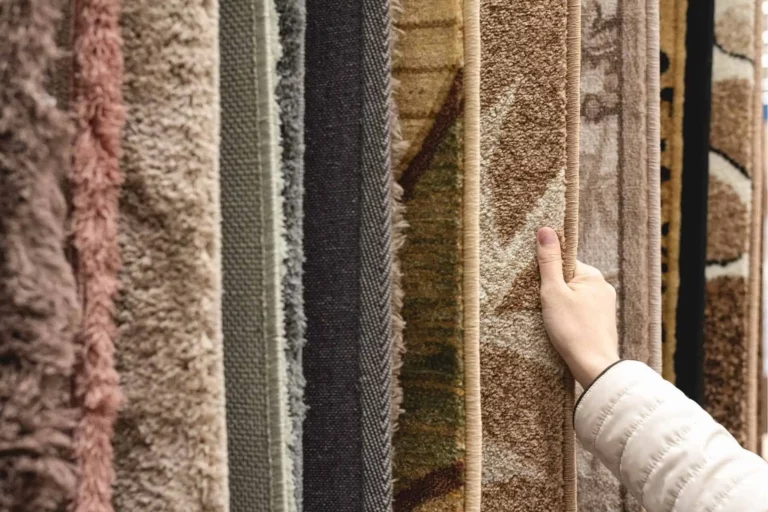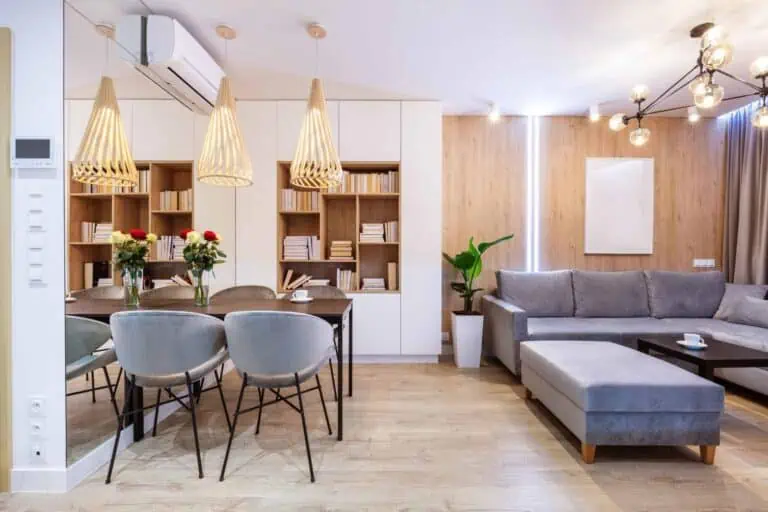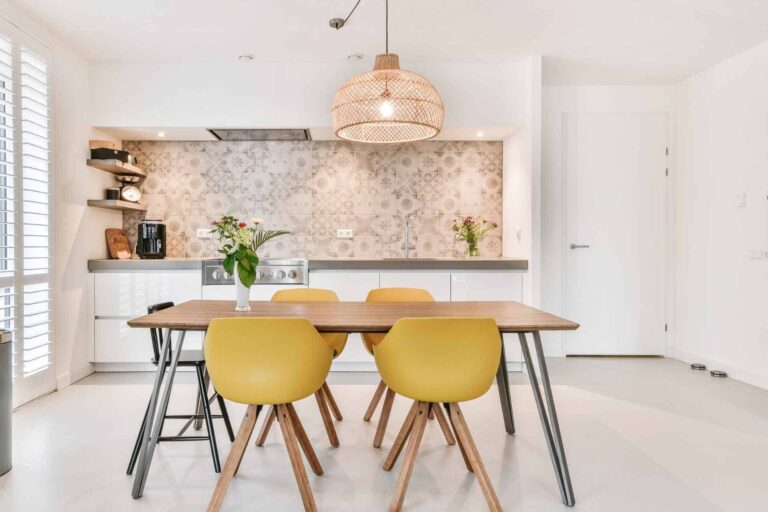Apartment Living Room Ideas: Maximizing Small Spaces With Smart Design
If you’re living in a small apartment, you know that making the most of your living space is essential. The living room is often the central hub of your home, where you entertain guests, relax after a long day, and spend quality time with your family. However, designing a living room in a small apartment can be challenging. You want to create a space that is both functional and stylish, without feeling cramped or cluttered.
Fortunately, there are plenty of apartment living room ideas that can help you achieve your design goals. From clever storage solutions to creative furniture arrangements, there are many ways to make the most of your small living room. Whether you’re looking to create a cozy oasis or a chic, modern space, there are plenty of ideas to inspire your next project. So, whether you’re a seasoned interior designer or a first-time apartment renter, read on for some expert tips and tricks for designing a beautiful living room in a small space.
Understanding Space and Layout
When it comes to designing your apartment living room, one of the most important factors to consider is space and layout. You need to make the most out of the limited space you have while also ensuring that your living room is comfortable and functional. Here are some tips to help you understand space and layout better:
- Measure your space: Before you start buying furniture or decor, it’s essential to measure your living room’s dimensions. This way, you can determine what furniture will fit and the best layout for your space. Be sure to measure the length and width of your living room, including any alcoves or recessed areas.
- Consider the shape of your living room: The shape of your living room will also determine the best layout for your space. For instance, if your living room is long and narrow, you may need to create two separate seating areas. On the other hand, if your living room is square, you can arrange your furniture in a more centralized layout.
- Create a focal point: A focal point is a prominent feature in your living room that draws the eye and anchors the space. It could be a fireplace, a piece of art, or a large window. Once you’ve identified your living room’s focal point, arrange your furniture around it to create a cohesive and balanced layout.
- Consider traffic flow: When designing your living room’s layout, you also need to consider traffic flow. Ensure that there is enough space for people to move around comfortably without bumping into furniture. You can create clear pathways by arranging your furniture in a way that allows for easy movement.
- Choose furniture that fits your space: When selecting furniture for your living room, be sure to choose pieces that fit your space. Avoid oversized furniture that can overwhelm your living room and make it feel cramped. Opt for multi-functional furniture such as a sofa bed or an ottoman with storage to maximize your space.
By understanding space and layout, you can create a comfortable and functional living room that maximizes your space’s potential. Keep these tips in mind when designing your living room to ensure that you create a space that works for you.
You may also like:
Choosing the Right Furniture
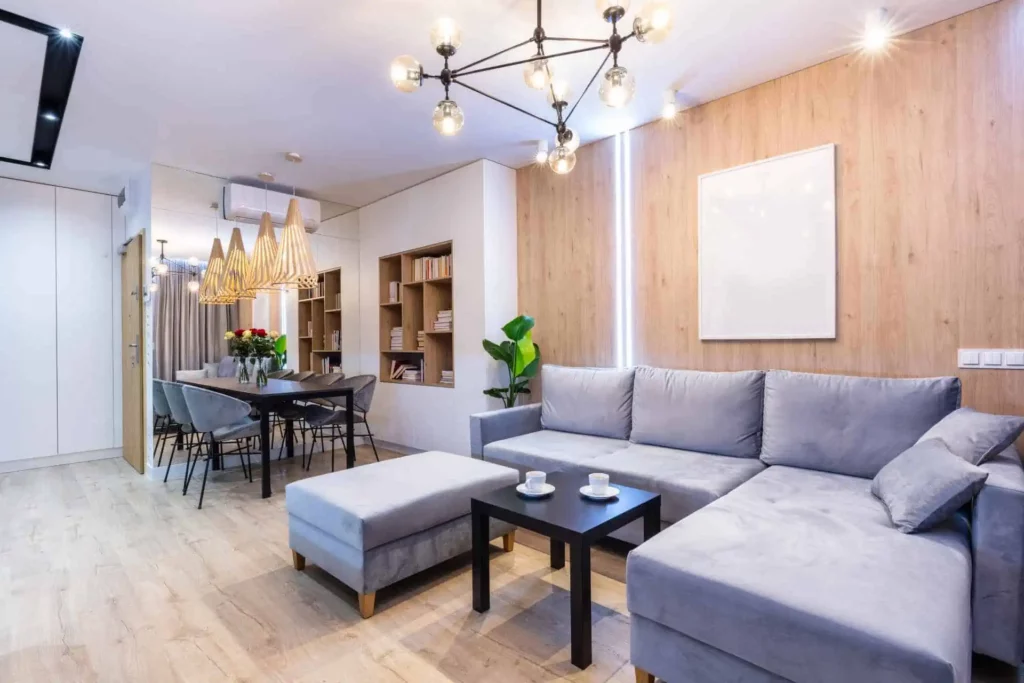
When it comes to furnishing your apartment living room, selecting the right furniture is crucial. You want pieces that are not only stylish but also functional and comfortable. Here are some tips to help you choose the right furniture for your space.
Sofa Selection
The sofa is the centerpiece of your living room, so it’s important to choose one that fits your style and needs. Consider the size of your space and the number of people who will be using the sofa. A sectional sofa is a great option for larger spaces and can provide ample seating. If you have a smaller space, a loveseat or apartment-sized sofa may be a better fit.
When it comes to choosing the right fabric, consider your lifestyle. If you have kids or pets, a durable and stain-resistant fabric like microfiber or leather may be a better option. If you prefer a softer feel, consider a velvet or chenille fabric.
Coffee Table Choices
A coffee table not only adds functionality to your living room but also serves as a decorative piece. When choosing a coffee table, consider the size of your space and the height of your sofa. The coffee table should be proportional to the size of your sofa and should be at a comfortable height for you to reach.
Consider the material of the coffee table as well. A glass or acrylic table can create a more open feel in your space, while a wood or metal table can add warmth and texture.
Accent Furniture Pieces
Accent furniture pieces like chairs, ottomans, and side tables can add personality and functionality to your living room. When choosing accent pieces, consider the style and color of your existing furniture. Look for pieces that complement your sofa and coffee table.
Consider the function of the accent piece as well. An ottoman can serve as extra seating or a footrest, while a side table can provide a place to set drinks or books.
By following these tips, you can choose the right furniture for your apartment living room that is both stylish and functional.
Color Schemes for Living Room
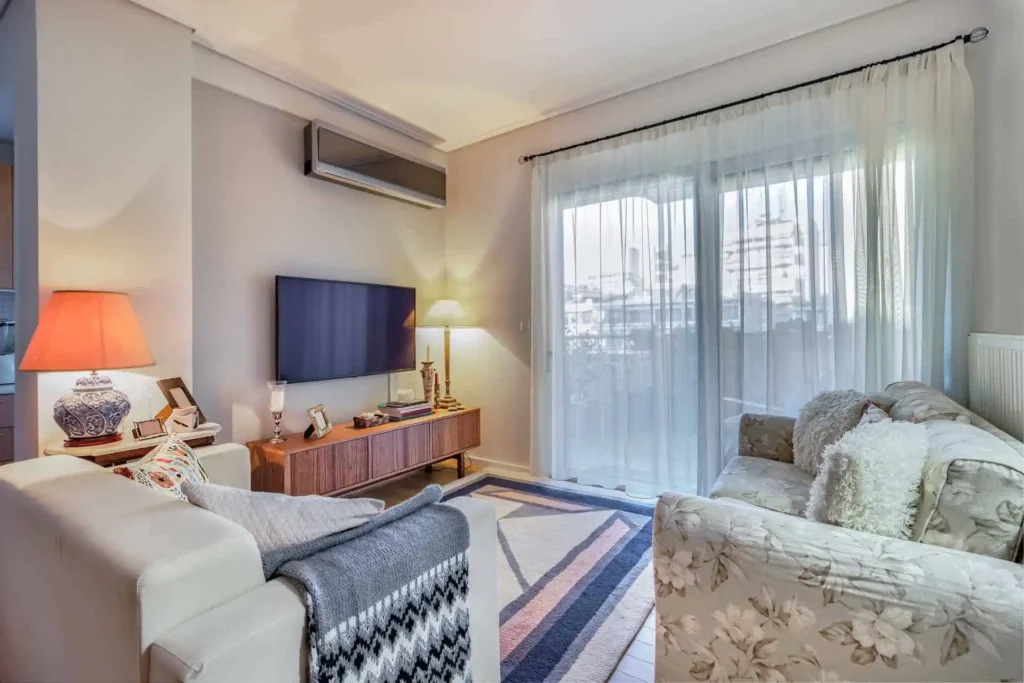
Choosing the right color scheme for your living room can be a daunting task. You want to create a space that is inviting, comfortable, and reflects your personal style. Here are some popular color schemes for living rooms that you can consider:
Neutral Colors
Neutral colors such as beige, gray, white, and cream are timeless and versatile. They create a calm and relaxing atmosphere in your living room. You can pair neutral colors with bold accent pieces such as a colorful rug, throw pillows, or artwork to add some personality to your space.
Blue and Green
Blue and green are soothing colors that evoke a sense of tranquility and relaxation. They are perfect for creating a calming and peaceful living room. You can use different shades of blue and green to create a monochromatic color scheme or pair them with neutral colors such as white or beige.
Bold Colors
If you want to make a statement with your living room, consider using bold colors such as red, orange, or yellow. These colors are energizing and can create a vibrant and lively atmosphere. However, it’s important to use them sparingly and balance them with neutral colors to avoid overwhelming your space.
Black and White
Black and white is a classic color scheme that never goes out of style. It creates a sleek and modern atmosphere in your living room. You can use black and white in different patterns such as stripes, polka dots, or chevron to add some visual interest to your space.
Warm Colors
Warm colors such as red, orange, and yellow create a cozy and inviting atmosphere in your living room. They are perfect for creating a comfortable and welcoming space. You can pair warm colors with neutral colors such as beige or gray to balance them out.
Lighting Ideas

When it comes to designing your apartment living room, lighting is a crucial aspect that can make or break the overall ambiance of the space. Here are some lighting ideas to help you create a warm and inviting atmosphere in your living room.
Natural Light
The first and most obvious source of light is natural light. If your apartment has windows that let in plenty of sunlight, take advantage of it. Natural light can make your living room feel brighter, more spacious, and more inviting.
To maximize natural light, consider the following tips:
- Hang sheer curtains: Sheer curtains can help soften harsh sunlight while still allowing plenty of light to enter your living room.
- Use mirrors: Mirrors can reflect natural light and make your living room feel brighter and more spacious.
- Keep windows clean: Dirty windows can block natural light, so make sure to keep them clean.
Artificial Light
If your apartment doesn’t have a lot of natural light, or if you want to create a cozy atmosphere in the evening, artificial light can help. Here are some ideas:
- Layer your lighting: Instead of relying on one central overhead light, use a combination of floor lamps, table lamps, and sconces to create a warm and inviting atmosphere.
- Choose warm bulbs: Avoid harsh, cool-toned bulbs and opt for warm bulbs instead. Warm bulbs can create a cozy and inviting atmosphere in your living room.
- Use dimmer switches: Dimmer switches can help you adjust the brightness of your lights and create a more intimate atmosphere in the evening.
By using a combination of natural and artificial light, you can create a cozy and inviting atmosphere in your apartment living room.
Incorporating Art and Decorative Elements

One of the simplest ways to add personality and style to your apartment living room is by incorporating art and decorative elements. Whether you prefer modern, classic, or eclectic styles, there are plenty of options to choose from.
Artwork
Adding artwork to your living room can transform the space and create a focal point. Consider hanging a large piece of artwork above your couch or creating a gallery wall with a collection of smaller pieces. When choosing artwork, look for pieces that complement your existing color scheme and decor style.
If you’re not sure where to start, consider visiting local art galleries or browsing online art marketplaces. You can also find affordable prints and posters at stores like IKEA, Urban Outfitters, and Society6.
Decorative Objects
Decorative objects can add personality and texture to your living room. Consider adding decorative objects like vases, sculptures, and candles to your coffee table or bookshelf. When choosing decorative objects, look for pieces that complement your existing decor style and color scheme.
You can also incorporate decorative objects that reflect your personal interests and hobbies. For example, if you’re a music lover, consider displaying vintage records or musical instruments.
Plants
Adding plants to your living room can create a natural and calming atmosphere. Consider adding a large potted plant in the corner of your living room or a collection of smaller plants on your coffee table or bookshelf.
When choosing plants, consider the amount of natural light in your living room and the level of care required for each plant. Some popular indoor plants include snake plants, fiddle leaf figs, and peace lilies.
Incorporating art and decorative elements into your living room can transform the space and create a personalized atmosphere. Consider experimenting with different styles and objects to find the perfect combination for your apartment.
Rug Placement Tips


A rug can make a significant difference in the look and feel of your living room. It can add color, texture, and warmth to your space. However, choosing the right size and placement of the rug is essential to achieve the desired effect. Here are some rug placement tips to help you create a cozy and inviting living room:
1. Choose the Right Size Rug
The size of the rug you choose depends on the size of your living room and the furniture arrangement. A rug that is too small will make your room look disjointed, while a rug that is too big will overwhelm the space. Here are some general guidelines to follow:
- For a small living room, choose a rug that is at least 5 feet by 8 feet.
- For a larger living room, choose a rug that is at least 8 feet by 10 feet or 9 feet by 12 feet.
- If you have a sectional sofa, choose a rug that is large enough to fit all the furniture on it.
2. Place the Rug Properly
The placement of the rug is also crucial to achieving a cohesive look in your living room. Here are some placement tips to consider:
- Place the front legs of your sofa and chairs on the rug to anchor the furniture in the space.
- If you have a smaller rug, place it in the center of the seating area to create a cozy conversation area.
- If you have a larger rug, you can place it under the furniture, so it creates a cohesive look in the space.
3. Consider Your Room Layout
Your living room layout can also affect the placement of the rug. Here are some layout-specific tips to consider:
- If you have a long and narrow living room, place the rug perpendicular to the sofa to create a visual break in the space.
- If you have a square living room, place the rug at an angle to create a dynamic look in the space.
- If you have an open-plan living room, use a rug to define the different areas in the space.
By following these rug placement tips, you can create a cozy and inviting living room that reflects your style and personality.
Storage Solutions for Small Spaces
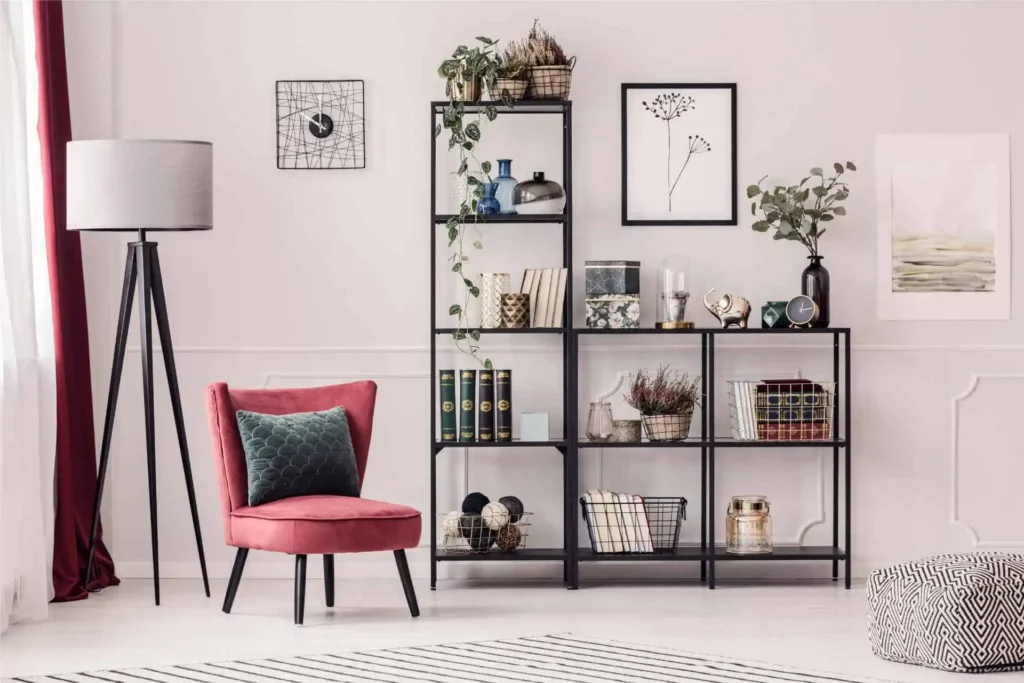
Living in an apartment with limited space can be challenging, especially when it comes to storage. Fortunately, there are several storage solutions that can help you maximize your living room space. Here are some ideas to consider:
- Floating Shelves: Installing floating shelves is a great way to add storage space to your living room without taking up floor space. You can use them to display decorative items, books, and other small items.
- Multifunctional Furniture: Invest in furniture that serves multiple purposes, such as a coffee table with built-in storage or an ottoman that doubles as a storage unit. These pieces can help you save space while keeping your living room clutter-free.
- Vertical Storage: Make use of vertical space by installing shelves or cabinets that extend from floor to ceiling. This is a great way to store items that you don’t use frequently, such as seasonal decorations or extra linens.
- Under Sofa Storage: Utilize the space under your sofa by investing in a sofa with built-in storage or by using storage containers that fit underneath it. This is a great way to store items that you want to keep out of sight but still need easy access to.
- Wall Storage: Consider installing a wall-mounted storage unit to store items such as DVDs, books, and games. This can help you keep your living room organized while adding a decorative touch to your space.
By incorporating these storage solutions into your living room, you can make the most of your space while keeping it organized and clutter-free.
Creating a Focal Point
When designing your apartment living room, creating a focal point is essential. A focal point is an area in the room that draws the eye and anchors the space. It can be anything from a piece of art to a fireplace or even a statement piece of furniture. Here are a few tips for creating a focal point in your living room:
1. Choose a statement piece
Start by selecting a statement piece that will be the center of attention. This could be a large painting, a unique piece of furniture, or a bold rug. Whatever you choose, make sure it’s something that you love and that reflects your personal style.
2. Highlight architectural features
If your living room has unique architectural features like a fireplace or built-in shelving, use them to your advantage. Highlighting these features with accent lighting or decorative objects can create a stunning focal point.
3. Use color to your advantage
Color is a powerful tool when it comes to creating a focal point. Choose a bold color for your statement piece or use contrasting colors to draw the eye to a particular area of the room. Just be sure to balance the colors throughout the space to avoid overwhelming the room.
4. Add texture
Incorporating texture into your focal point can add depth and interest to the space. Consider using a mix of materials like wood, metal, and fabric to create a multi-dimensional focal point.
5. Don’t forget about lighting
Lighting is a crucial element in creating a focal point. Use accent lighting to highlight your statement piece or architectural features. You can also use a unique light fixture as a focal point itself.
By following these tips, you can create a stunning focal point in your apartment living room that will make a lasting impression.
Mixing Patterns and Textures
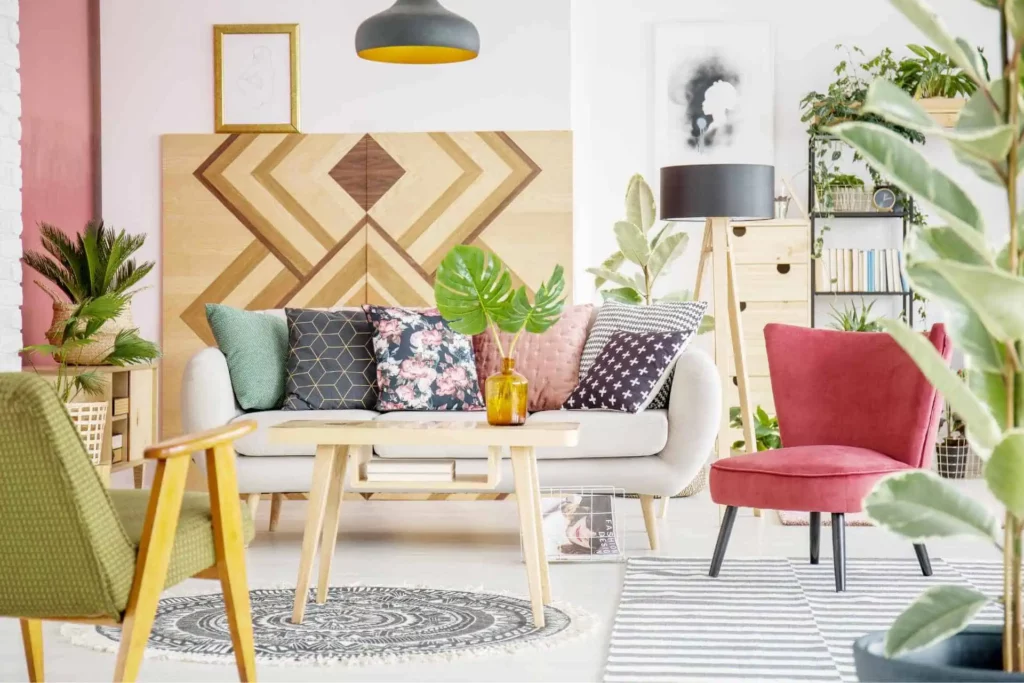
Mixing patterns and textures can add depth and interest to your apartment living room. It’s a great way to show off your personality and create a unique space that reflects your style. Here are some tips for mixing patterns and textures in your apartment living room:
Start with a Neutral Base
When mixing patterns and textures, it’s important to start with a neutral base. This will allow you to add in different patterns and textures without overwhelming the space. Choose a neutral color scheme for your walls, floors, and larger furniture pieces. This will create a cohesive look and allow your patterns and textures to stand out.
Mix Different Patterns
When mixing patterns, it’s important to choose patterns that complement each other. You don’t want to choose patterns that clash or compete with each other. Choose patterns that have a similar color scheme or pattern style. For example, you could mix a floral pattern with a stripe pattern or a geometric pattern with a polka dot pattern.
Add in Textures
Mixing textures can add depth and interest to your living room. Choose different textures for your throw pillows, rugs, and curtains. For example, you could mix a velvet pillow with a knit throw or a shaggy rug with a smooth leather chair. Adding in different textures will create a cozy and inviting space.
Use Bold Accents
When mixing patterns and textures, it’s important to use bold accents to tie the space together. Choose a bold accent color and use it throughout the space. This could be a bright throw pillow, a colorful vase, or a patterned rug. Using bold accents will create a cohesive look and tie all of your patterns and textures together.
Final Touches
Now that you have your furniture and decor in place, it’s time to add those final touches that will really bring your living room together. Here are a few ideas to consider:
- Artwork: Hanging artwork on your walls is a great way to add color, texture, and personality to your space. Consider a large statement piece or a gallery wall of smaller pieces to create visual interest.
- Throw Pillows and Blankets: Adding throw pillows and blankets to your sofa or chairs is an easy way to add color, texture, and coziness to your living room. Mix and match patterns and textures to create a layered and inviting look.
- Rugs: A rug can help define your living room space and add warmth and comfort underfoot. Choose a rug that complements your furniture and decor, and make sure it’s the right size for your space.
- Lighting: Lighting can make a big difference in the look and feel of your living room. Consider adding a table lamp, floor lamp, or pendant light to create ambient lighting and add visual interest.
- Candles and Plants: Adding candles and plants to your living room can create a cozy and inviting atmosphere. Choose candles with your favorite scent and add a few plants to add some greenery and fresh air to your space.
- Accessories: Finally, don’t forget the little details! Adding accessories like vases, trays, and decorative objects can add personality and style to your living room. Choose items that complement your decor and add a personal touch to your space.
With these final touches, your living room will be complete and ready for you to enjoy!
Frequently Asked Questions
How can I decorate my small apartment living room?
When decorating a small apartment living room, it’s important to keep in mind the limited space you have to work with. Consider using multifunctional furniture, such as a sofa bed or a coffee table with hidden storage. Use light colors and minimal patterns to create the illusion of more space. Hang mirrors to reflect light and make the room feel larger.
What are some budget-friendly apartment living room ideas?
You don’t need to break the bank to decorate your apartment living room. Consider shopping at secondhand stores or online marketplaces for affordable furniture and decor. Create your own artwork or use inexpensive prints to decorate your walls. Use throw pillows and blankets to add color and texture to your space.
What are some minimalist apartment living room ideas?
Minimalist apartment living room ideas focus on simplicity and functionality. Use neutral colors and simple patterns to create a clean and uncluttered look. Choose furniture with clean lines and minimal decoration. Use storage solutions to keep clutter out of sight.
How can I make my apartment living room look cozy?
To make your apartment living room look cozy, use warm colors and soft textures. Use throw pillows and blankets to add comfort and warmth. Create a focal point, such as a fireplace or a piece of artwork, to draw the eye and make the room feel inviting.
What are some tips for setting up a small living room in an apartment?
When setting up a small living room in an apartment, consider the flow of the room. Use furniture that fits the scale of the room and allows for easy movement. Use rugs to define separate areas within the room. Use lighting to create ambiance and highlight key features of the room.
How can I make my apartment feel more like a home?
To make your apartment feel more like a home, personalize your space with decor that reflects your style and interests. Use lighting to create a warm and inviting atmosphere. Invest in comfortable furniture that you enjoy using. Create a sense of community by inviting friends and family over for gatherings.




